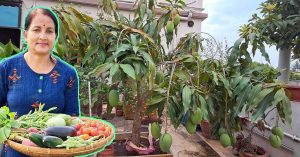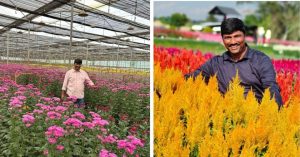Soil-Less Strawberries to Hydroponic Figs: Ratlam Brothers Reap Success With Hi-Tech Nursery
Brothers Arvind and Ravindra Dhakad operate a hi-tech nursery in Ratlam, Madhya Pradesh. They use innovative techniques like hydroponics and aeroponics to grow various crops such as tomatoes, broccoli, lettuce, kale, and even strawberries.

In 2013, Madhya Pradesh’s Arvind Dhakad went on an agricultural tour to Israel. For the first time, the farmer saw a wide range of lush green crops being cultivated, but without soil.
“We went to learn how farmers in Israel grow grapes and jamfal (guava) but what took my interest were these bunches of strawberries that were growing in water tanks,” the 40-year-old tells The Better India.
He informs that Israel is known for adopting soil-less hydroponics farming — an ideal for farmers with limited land resources and water availability.
Arvind was so fascinated by soil-less farming that he decided to adopt the practice in his village Riyavan in Ratlam, which is well known for cultivating traditional crops like garlic and soybean.
Without any formal training, Arvind along with his brother Ravindra started cultivating crops hydroponically. Today, the siblings have also established a hi-tech nursery that earns them up to Rs 10 lakh annually.
The Dhakad brothers claim they are the first ones to venture into hydroponics farming in Madhya Pradesh. We reached out to them to understand how they achieved this feat.
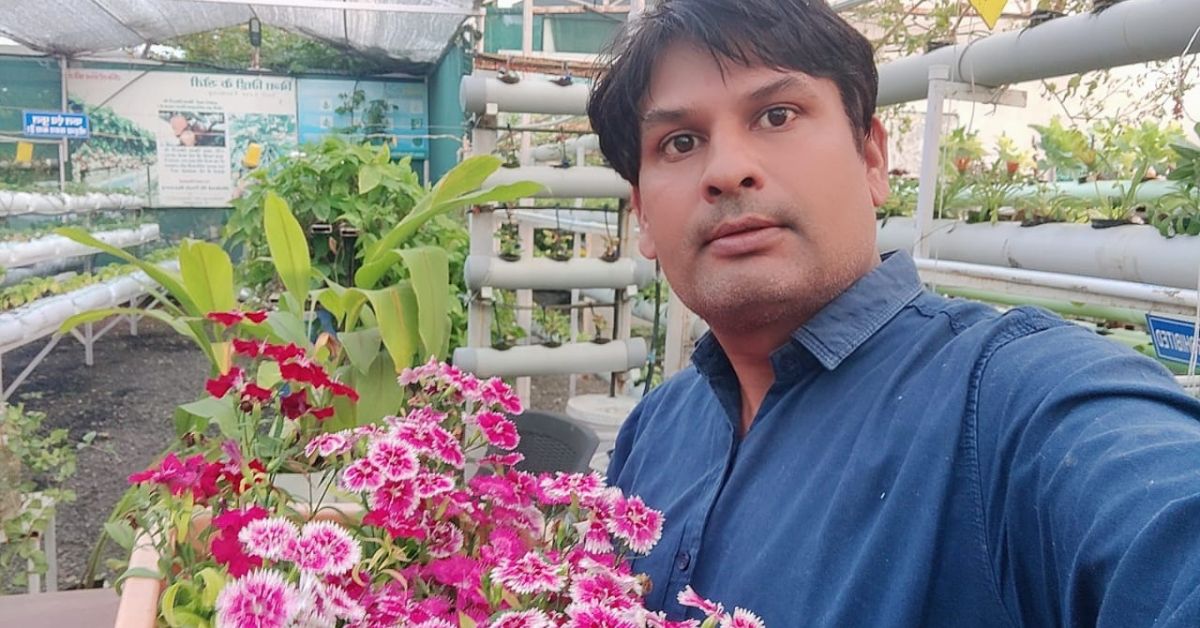
Growing eight times the produce with limited space, water
Born into an agricultural family, Arvind graduated in commerce whereas Ravindra pursued higher education in life sciences. After working for three years in an agrochemical company in Karnataka, Arvind quit his job to come back to his village and become a farmer like his forefathers.
Conventionally, the family had been growing crops like garlic, wheat, mustard, soybean, grapes, guava, and strawberries on their 10-acre farmland.
Earlier, Arvind used to grow strawberries on land. For this, he had to plough the land using tractors, prepare beds, and then after mulching and adding drip lines, he would sow about 8,000 saplings in one bigha of land.
While on the Israel trip, the farmer learned that he could get eight times the production from the same space with the hydroponics method.
So after coming back, Arvind was enthusiastic about adopting the new method of farming. But when he sought help from the agriculture department, he was disheartened. “Back then, nobody in the region knew about hydroponics. I had no one who could guide me,” he recalls.
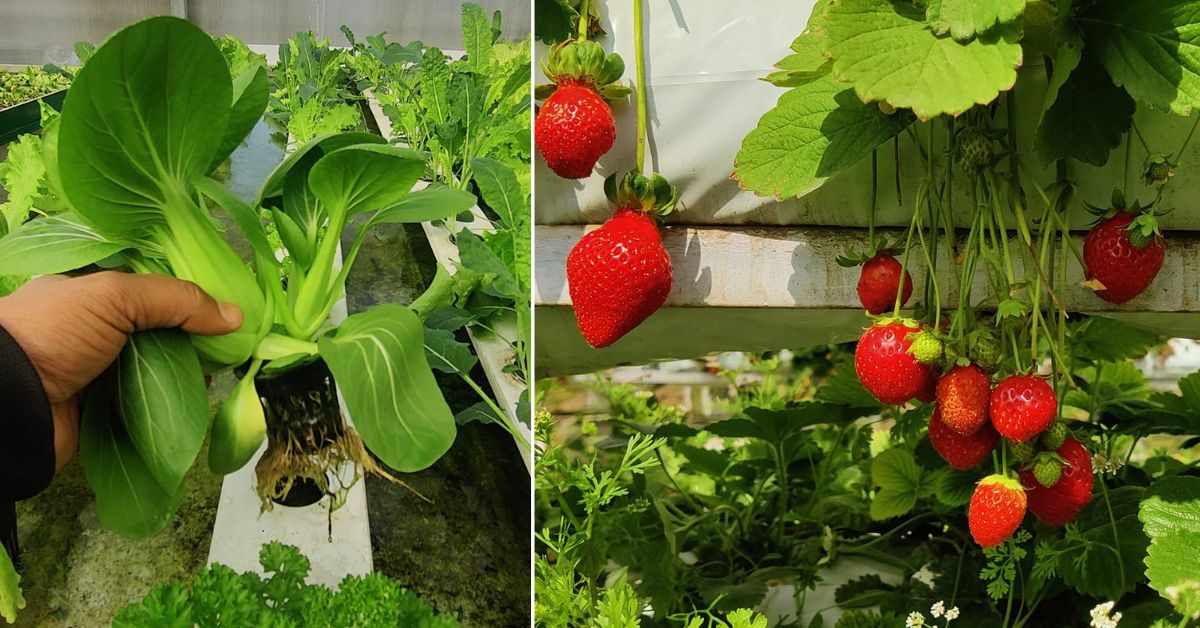
But without losing hope, Arvind decided to set up a hydroponic unit. For starters, he bought a few 110 mm PVC pipes and cut them on his own. “I did not know how to cut the pipe in the first place. I did not know how to arrange them in grids, how to drill holes in pipes to make holders for net pots, and how to add nutrient mix in the water tank,” he adds.
With faint memories from the Israel trip, he managed to assemble the pipes. He then planted saplings in cocopeat in net pods, added water-soluble nutrients in the water reservoir, and turned on the water supply. “It was a success! All my 500 saplings survived,” says Arvind with pride.
Since then, there has been no looking back.
Today, Arvind grows a wide range of seasonal vegetables, fruits, and flowers — including tomatoes, spinach, coriander, chillies, capsicum, broccoli, lettuce, parsley, kale, strawberries, and 10 varieties of anjeer (fig) in his 8,000 sq ft hydroponics setup.
Establishing a hi-tech nursery
After starting his ‘smart’ hydroponics farming, the brothers included grow bags, introduced techniques such as the NFT (Nutrient Film Technique) system, aquaponics towers to grow tubers, and grafting big fruit trees like grapes, jamun, and guavas in their hi-tech nursery.
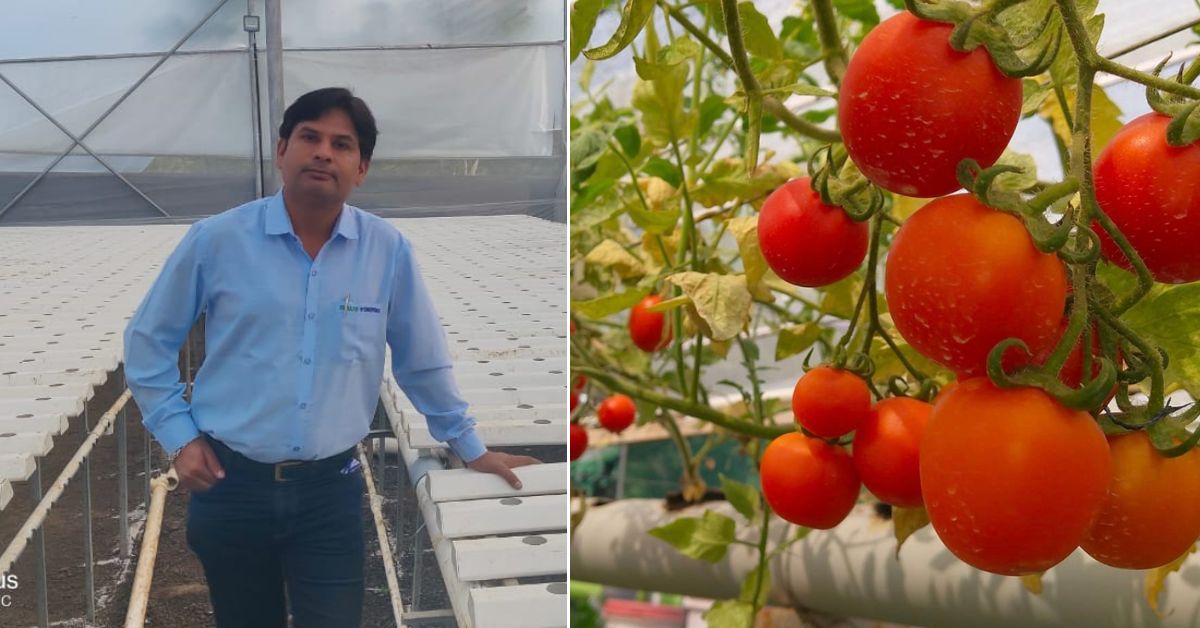
Talking about this nursery, Arvind says, “Usually, people sow seedlings of crops like tomatoes and chillies in soil. We grow it inside a tray using cocopeat and nutrients. By using this method, we manage to grow saplings within 20 to 25 days, compared to the usual 45 days.”
“We grow tubers using the aeroponics method where tubers like potatoes are grown by spraying water on their roots,” he adds.
Additionally, he prepares a unique insecticide using five varieties of leaves that are usually disliked by animals like cows, buffaloes, and goats. “Leaves that are not eaten by cows and goats make an ideal insecticide,” says Arvind.
“We prepare a mixture using the leaves of papaya, neem, dhatura (thorn apple), karanj (Indian beech), arandi (ricinus), and sitaphal (custard apple). We leave them to rot in water for 15 to 20 days. The leaves decompose and release a smell that shoos away the insects, and therefore, acts as a good pest repellent,” he shares.
Trained 7,000 enthusiasts from India & abroad
More than commercialising the produce, Arvind focussed on training city residents through demonstrations. “We get many queries from people across the country and abroad. Our main objective is to help people in the city grow their own chemical-free vegetables in small spaces, be it their terrace or balconies,” he says.
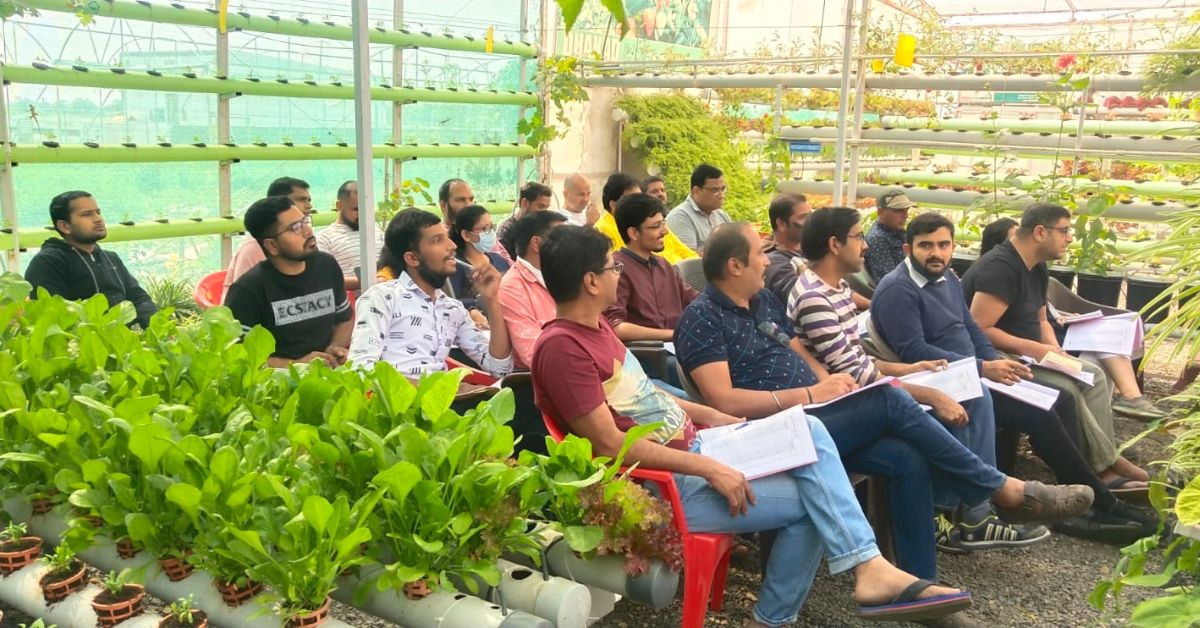
Every month, the brothers organise a paid two-day workshop to train farming enthusiasts.
Indore-based Sameer Mishra, who runs a logistics company Alphabet Services, always wanted to grow vegetables organically for his family and community. Amid the COVID-19 pandemic, he met Arvind and set up a 4,000 sq ft hydroponics farm to grow vegetables like kale, strawberries, lettuce, bell peppers, and 15 types of exotic tomatoes.
“Arvind has taught me various kinds of hydroponics systems, the NFT techniques, the Dutch bucket, and the wick system. He explained everything in detail during the training. He even has all kinds of models in his nursery that helped me clearly understand how the system works,” he tells The Better India.
So far, they have helped at least 7,000 people from Mumbai, Delhi, Hyderabad, Indore, Lucknow, and neighbouring countries like Nepal and Sri Lanka, learn the hydroponics method of cultivation.
“Our workshops are even attended by businessmen who have turnovers in crores. It is surprising for us that people who earn crores want to learn to farm. This gives us immense contentment. Certainly, we must be doing good work,” he adds. If you found our stories insightful, informative, or even just enjoyable, we invite you to consider making a voluntary payment to support the work we do at The Better India. Your contribution helps us continue producing quality content that educates, inspires, and drives positive change. Choose one of the payment options below for your contribution- By paying for the stories you value, you directly contribute to sustaining our efforts focused on making a difference in the world. Together, let’s ensure that impactful stories continue to be told and shared, enriching lives and communities alike. Thank you for your support. Here are some frequently asked questions you might find helpful to know why you are contributing?

But their vision is even bigger, says Arvind. “Today, shoes are sold in showrooms while crops — an everyday necessity — are sold at throwaway prices on the roadside. Our vision is to turn agriculture profitable using technology so that new generations do not feel ashamed in taking up farming.”
Edited by Pranita Bhat; All photos: Arvind Dhakad.
This story made me
-
97
-
121
-
89
-
167




